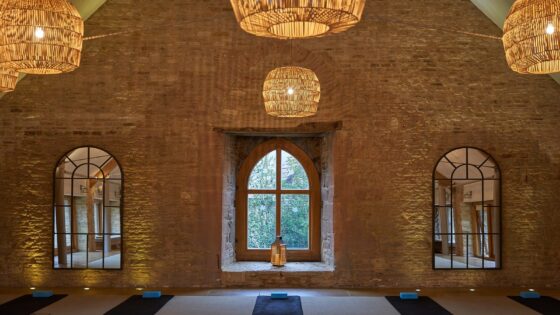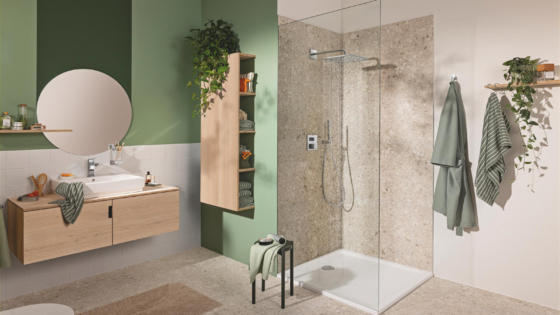With quietness at its core, the nestwell installation at HIX explored the theme of responsible wellness in hotel design. The collaborative and multi-layered journey, spearheaded by nestwell, involved leading interior designers and architects from Sieger Design, Studio Carter, and Studio Corkinho, all of whom put forward concepts of slow design with wellbeing firmly on the agenda. The climax of the project was an insightful panel discussion that took place on the HIX Talks stage, moderated by Editor Hamish Kilburn. Pauline Brettell writes…
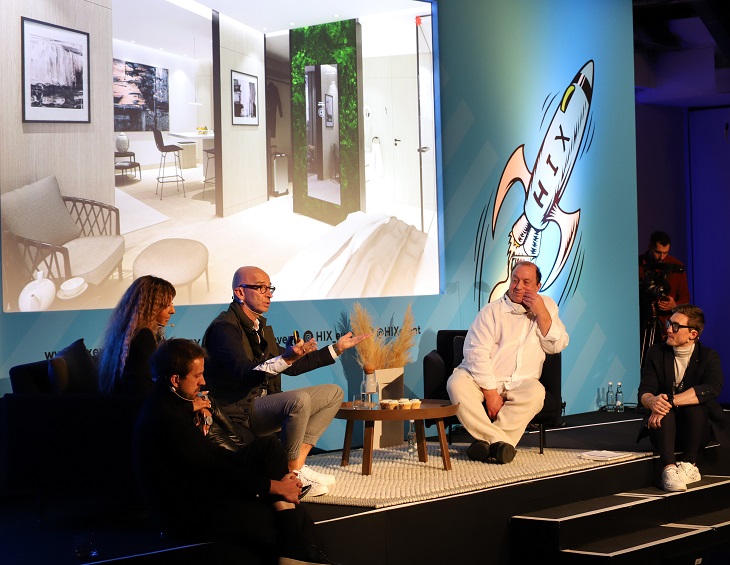
Day two of HIX 2021 was again characterised by energy and innovation. One panel discussion in particular, entitled: Quietness with Attitude, went beyond convention and instead took the debate on wellness and wellbeing in hotel design to a whole new level. The session aimed to amplify the thought and passion behind the nestwell installations that were displayed at the show, and the design processes of the studios that were involved. Moderated by Hamish Kilburn, Editor, Hotel Designs, the discussion about wellness in hospitality became about a lot more than simply installing a power-shower in the ensuite.
“Wellness has been solidly on the agenda for years, and it’s significant that time and time again, at shows like HIX, we believe it’s our duty to stretch this topic and take it further than ever – be that through sensory design, immersive art and even as far as whole hotel concepts,” said Kilburn. “I know Covid-19 is a bit of a dirty word, but the pandemic was the catalyst we needed to elevate this topic beyond the spa and high-tech bathroom controls, to instead highlight the need to discuss mental health; to remove social taboos and evolve peoples’ definition of wellbeing. By unveiling, discussing and thus amplifying three separate hotel room themes, all of which share a human-centric approach to wellness and design, together it really feels like we are changing the narrative once and for all.”

Image caption: Cedric Etienne (Studio Corkhino), Hen’a Yadav (Studio Carter) and Christian Sieger (sieger design) discussing their sets on the HIX Talk stage. | Image credit: HIX
Introducing the concept to the audience was Motti Essakow in his role as Co-Founder of nestwell, and the driving force behind both the installation, and the philosophy behind it. Kicking off the discussion, Essakow went back to what was for him, a key point of inspiration, the spark that ignited nestwell, with this quote from 1972 when the country of Bhutan took the bold move to create the world’s first Gross National Happiness Index – where the wellbeing of the people and development of the country would no longer be measured based on economic indicators and instead based on happiness indicators: “Happiness and wellbeing is the concern for everyone. Whether or not you acknowledge it, this is the purpose of every human being”– Kingdom of Bhutan.
Fast forward to 2014, and WELL – the world’s first design and building standard to focus on enhancing people’s health and wellbeing through the built environment. In many ways this was the beginning of the conversation. Then came Covid-19, and like so many other conversations, lockdown, and all that came with it, made the industry look at theories of wellness with renewed interest and vigour. Inspired by how the WELL standard and Wellness Real Estate had become one of the hottest global lifestyle trends, while noticing how there was nothing similar occurring in the global – including London – hotel sector, the discussion on wellness and wellbeing was getting louder and looking for definitive answers.
It was this search for solutions that developed into nestwell, which took on the task of setting a new and pioneering industry framework for shaping and elevating ideas of wellness through design. “The solutions as presented and discussed by the panel of nestwell designers are about a multi-level approach to design, as well as about a multi-dimensional view of what we actually mean by wellness, and how that translates into a hotel room design,” explained Essakow. “Each studio developed a facet of the conversation and looked at three different types of experiential and sensorial rooms to illustrate the concept.”
The installation, which was inspired around the 12 guiding principles of nestwell, was divided into a space to Re-Charge (spa) by sieger design, an area for Tranquility by Studio Carter, and a suite to be Unplugged by Studio Corkinho.
“We want to bridge this gap and make the stay as pleasant, inspiring and relaxing as possible for business travellers.” – Christian Sieger, Owner and CEO, sieger design.
Re-Charge, designed by sieger design
Giving some background to the re-charge (spa) concept was Christian Sieger, Owner and CEO of sieger design, who spoke about the importance of the quality of the space rather than the quantity of space, the importance of being able to recharge, to be able to unplug while remaining connected. The bathroom is now the centrepiece in this concept rather than the add on, as it becomes all about harnessing the regenerative and therapeutic power of water. “I want to see the same quality I have at home in the hotel,” said Sieger. “In my experience, there were no hotel rooms that met my demands for comfort and furnishing. With the Re-Charge suite, we want to bridge this gap and make the stay as pleasant, inspiring and relaxing as possible for business travellers.”
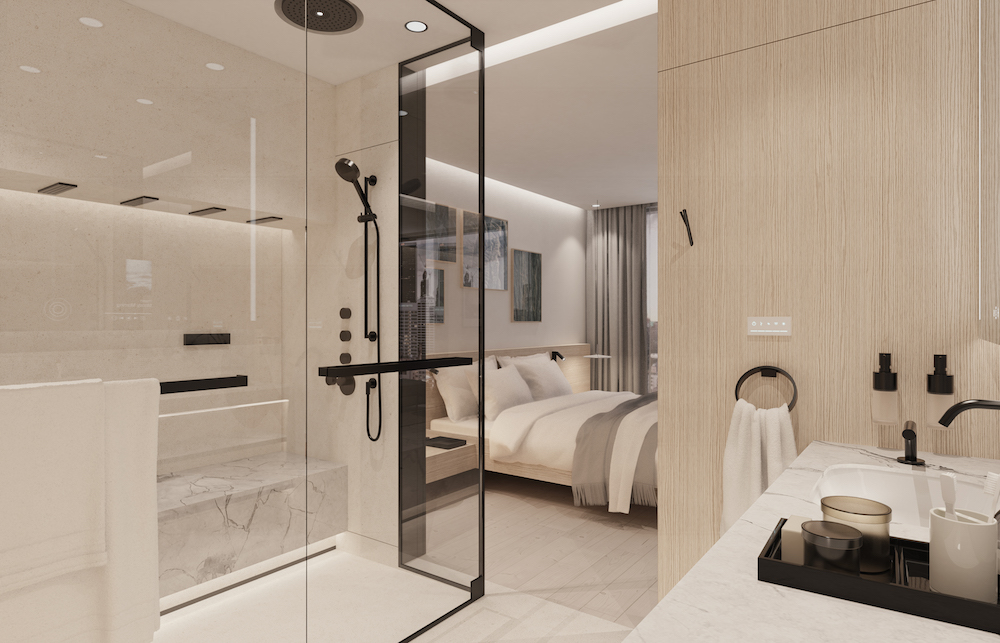
Image caption: sieger design unveiled its version of a spa hotel room at HIX. | Image credit: sieger design
“For me it was a wonderful experience to share our solution of a nestwell spa hotel room at HIX, to have a personal exchange with all those involved and interested in the vision of nestwell and to receive positive feedback directly from the audience. I am sure that, together with our and the other solutions, we made an impact to start a movement for better hotel room design. In the near future, these rooms will enhance our and the guests’ staying experience in hotels and make their stay as pleasant, inspiring and relaxing as possible.”
Tranquility, designed by Studio Carter
One of the recurring themes in this discussion was the importance of flexibility in design, (flexibility being one of the HIX buzzwords right across the event, including in the earlier panel discussion exploring the WFHotel concepts). On this platform, the conversation explored the idea of how to introduce flexibility into the hotel experience and the guestroom design. Hen’a Yadav from Studio Carter discussed this idea in some detail in relation to the Tranquillity suite. Having observed a significant change in her own post-pandemic lifestyle, and realised it was for the better, she considered how this could be integrated into design. “The boundaries between my work and my play hours were dissolving more and more,” she explained, “and though things remained fluid, an adaptive and flexible approach needed to be introduced.”
That is when the theme of “one room, many faces” was developed.

Image credit: Studio Carter’s concept explored organic materials as well as fluid architecture to create an authentic sense of wellbeing. | Image credit: Studio Carter
Although as boundaries disappeared, some structure is then required, or to be more precise – a routine, a ritual. This lead Yadav to the idea of bringing this tailored and adaptive lifestyle concept to the hotel guestroom. That is when the theme of “one room, many faces” was developed. The importance of being able to design a guestroom with multiple faces, allowing the guest to configure the space according to their needs. The increased connection between work and play leads organically to the need for the guestroom to both reflect and accommodate choices and lifestyle. Yadav went on to discuss the importance of materials, and how a conscious and considered use of materials needs to be included in wellness design. All the installations were in fact characterised by both a thoughtful, and thought provoking, use of materials that considered the impact on the individual and the broader impact on the environment.
For Etienne and the Unplugged installation, it is quite simply about eliminating distraction in design.
Unplugged, designed by Studio Corkhino
Finally, discussing another key element of the nestwell concept – that of Quietitude (Quietness-With-Attitude) – in the Unplugged installation was Cedric Etienne from Studio Corkhino. The installation was inspired by the studio’s philosophy, which is all about reflecting on “the architecture of silence” and exactly what it is about a room, a building, that can bring about a sense of serenity and wellness. But how do all these very conceptual ideas about intentionality and contemplativeness actually translate into a practical experience? For Etienne and the Unplugged installation, it is quite simply about eliminating distraction in design, and using the principles of the architecture of silence to transform the guestroom experience into a sanctuary that will promote the essential concept of wellbeing. It is about being able to create a space that not only allows you to slow down, but also engages your curiosity and evokes enhanced physical, emotional and cognitive wellbeing.
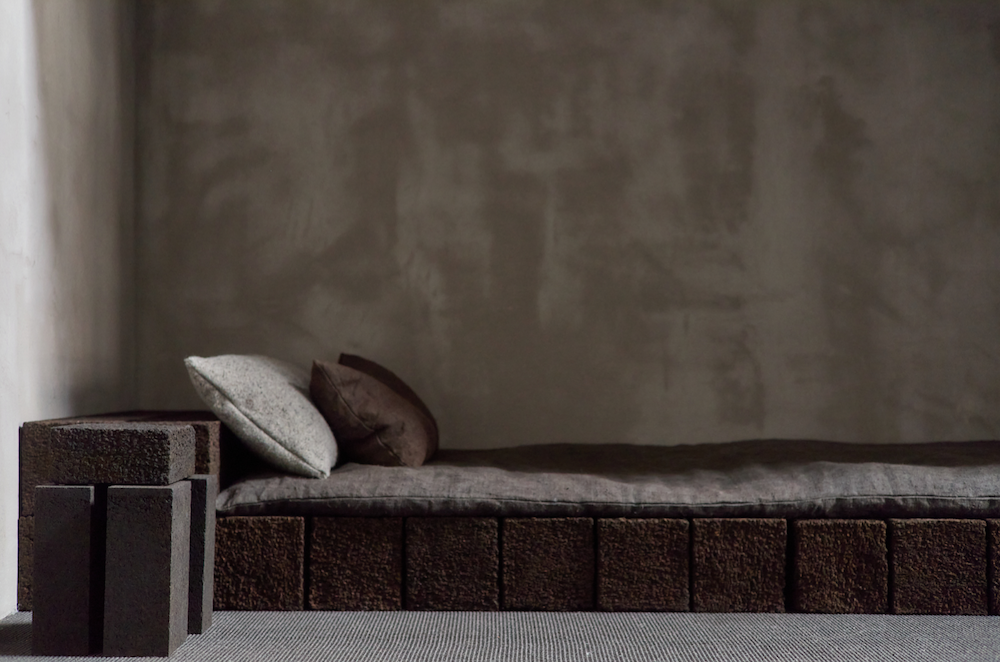
Image caption: Studio Corkinho decided to strip back the conventional hotel experience in order to create pockets of quietness within architecture and hospitality. | Image credit: Studio Corkinho
All the panellists discussed these ideas of stillness and silence in relation to wellbeing and how a space can transform and alter a guests sense of time. As a result, this reduces the pressure of time so that the concept of ‘downtime’ becomes something more tangible. Ultimately, nestwell is about looking at practical solutions for some very philosophical concepts. It explores how to create a positive experience through innovative and flexible use of space, a conscious use of materials and a way of directing technology, whether in the form of water or light, to enhance the hospitality experience. It takes on all of these questions, and provides hotel designers with some meaningful answers along with some rather weighty food for thought.
The Quietness with Attitude panel discussion at HIX, moderated by Hotel Designs, was sponsored by Hansgrohe.
Main image credit: HIX

